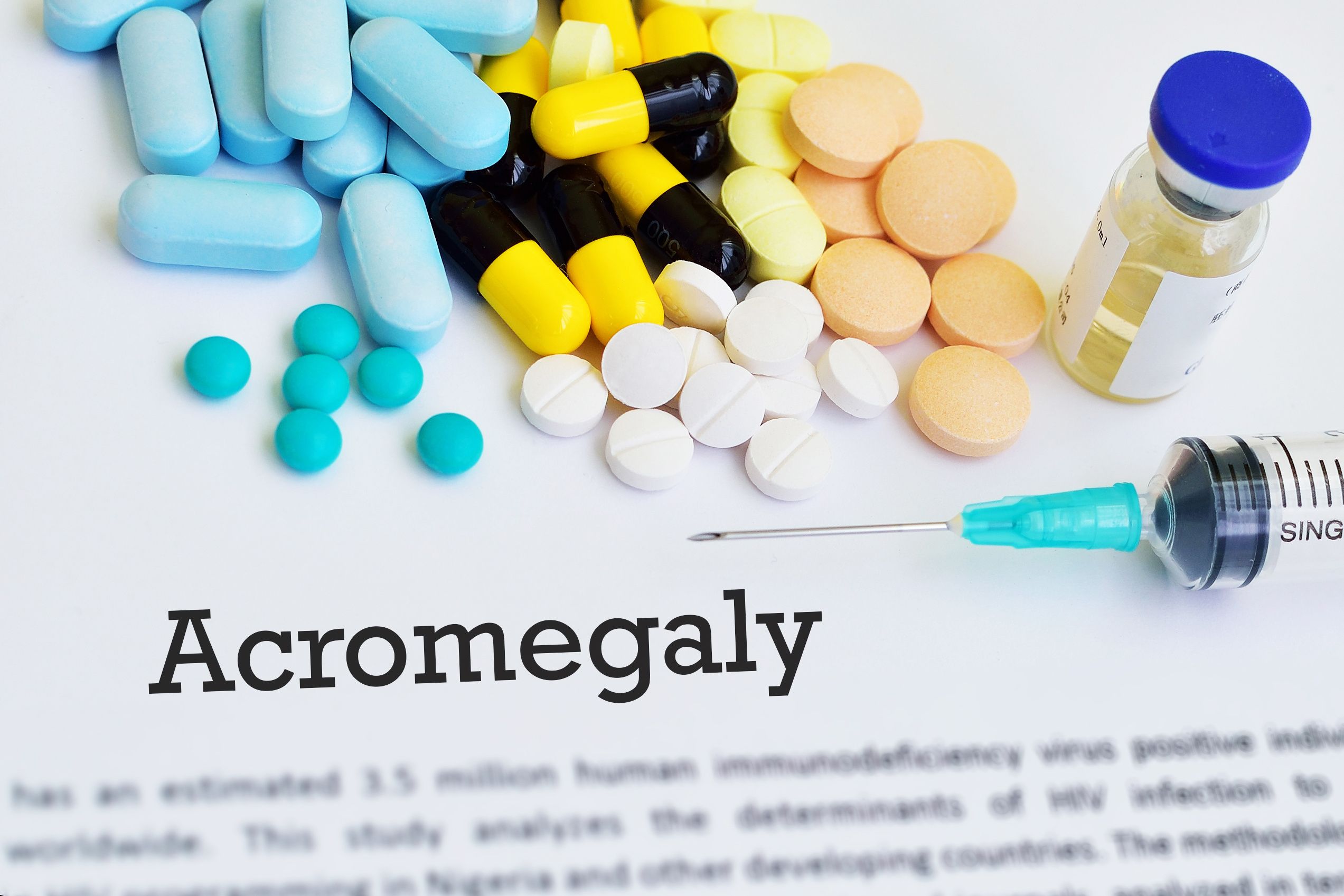- Center on Health Equity & Access
- Clinical
- Health Care Cost
- Health Care Delivery
- Insurance
- Policy
- Technology
- Value-Based Care
Daily Oral Paltusotine Maintains Acromegaly Treatment Benefit in Phase 3 Trial
Crinetics announced findings from the PATHFNDR-1 trial showing the investigative oral daily drug may provide patients with the rare disease an alternative from recurring injection therapy.
This article was originally published in HCP Live. It has been lightly edited.
A once-daily investigative oral drug was associated with a significant rate of patients with acromegaly, maintaining insulin-like growth factor (IGF-1).
Acromegaly is rare condition where the body produces too much growth hormone, causing body tissues and bones to grow more quickly, according to NHS definition.

Paltusotine, an investigational compound from Crinetics Pharmaceuticals, achieved statistically significant improvements in primary and secondary efficacy endpoints in the phase 3 PATHFNDR-1 trial, a 36-week assessment with an open-label extension that is comparing the agent to placebo in patients with the rare excessive growth hormone (GH) disorder.
The findings implicate a potential pathway toward paltusotine becoming a first-of-its kind treatment regimen for patients with acromegaly—a severe, potentially deadly disease that significant impacts daily functioning and quality of life—by introducing a less invasive method of care to the market.
In a statement from Crinetics on Monday, investigators reported significant outcomes with paltusotine in the randomized, double-blind, placebo-controlled PATHFNDR-1 trial, 1 of 2 ongoing phase 3 assessments of the daily oral drug in patients with acromegaly switching from standard-care injection depot somatostatin analogs.
In this assessment, investigators were assessing the drug in patients who were biochemically controlled on octreotide or lanreotide depot monotherapy. They enrolled 58 adult patients with IFG-1 levels of 1.0 or greater, times the upper limit of normal (1.0x ULN) at baseline. Primary endpoint was proportion of patients maintaining the IFG-1 level after switching from octreotide or lanreotide depot monotherapy to paltusotine after 36 weeks of treatment.
Patients were randomized to either treatment (n = 30) or placebo (n = 28) over the treatment period, then were invited to an optional open-label extension assessment of paltusotine in participants switching from somatostatin analogs.
According to the company, 25 (83%) patients receiving paltusotine achieved the primary endpoint of maintained IFG-1 levels less than 1.0x ULN after 36 weeks, compared with only 1 (4%) of patients receiving placebo (P < .0001).
Investigators additionally observed significant achievement in the 3 key secondary endpoints of treatment, including:
- Mean change from baseline IGF-1 level (0.04x ULN vs 0.83x ULN; P <.0001)
- Mange change from baseline in Acromegaly Symptoms Diary Score (-0.6 vs 4.6; P = .02)
- Proportion of patients who maintained GH levels of less than 1.0 ng/mL (20 [87%] vs 5 [18%]; P = .0003).
PATHFNDR-1 data additionally showed tolerability and no serious nor severe adverse events among participants treated with paltusotine; the most commonly reported treatment-emergent adverse events included arthralgia; headache; diarrhea; abdominal pain and nausea—each reported in fewer than 30% of treated patients.
While awaiting a fuller, peer-reviewed analysis of PATHFNDR-1 to be presented at upcoming scientific conferences, Crinetics executives and investigators expressed their excitement for the observed key outcomes.
“The results of PATHFNDR-1 are relevant to the patients we see every day in clinical practice who are biochemically controlled on standard-of-care injection,” said Monica R. Gadelha, MD, PhD, professor of endocrinology at the Medical School of the Universidade Federal do Rio de Janeiro and a principal investigator in the PATHFNDR program, said in a statement. “My colleagues and I are increasingly convinced many patients would appreciate an oral alternative which confers similar benefits without the burden and discomfort of the injections.”
Scott Struthers, PhD, founder and chief executive officer of Crinetics, stated that paltusotine was designed to become the preferred therapeutic option for patients with acromegaly. There’s hope it may become that soon enough.
“We could not be more excited by the results from PATHFNDR-1, which further reinforce our conviction that, if approved, paltusotine could address patients’ unmet need for a simple, oral, once-daily therapy,” said Struthers in a statement. “These data showed that upon switching from injected standard of care, paltusotine provided reliable, durable control of their disease. We intend to seek regulatory approval as quickly as possible once we complete the PATHFNDR-2 study early next year.”
Reference
Crinetics. Crinetics’ once-daily oral paltusotine achieved the primary and all secondary endpoints in the phase 3 pathfndr-1 study evaluating rreatment of patients with acromegaly. Press release. Published September 10, 2023. https://crinetics.com/crinetics-paltusotine-achieved-primary-and-secondary-endpoints-in-phase-3-pathfndr-1-acromegaly-study/
Managed Care Reflections: A Q&A With A. Mark Fendrick, MD, and Michael E. Chernew, PhD
December 2nd 2025To mark the 30th anniversary of The American Journal of Managed Care (AJMC), each issue in 2025 includes a special feature: reflections from a thought leader on what has changed—and what has not—over the past 3 decades and what’s next for managed care. The December issue features a conversation with AJMC Co–Editors in Chief A. Mark Fendrick, MD, director of the Center for Value-Based Insurance Design and a professor at the University of Michigan in Ann Arbor; and Michael E. Chernew, PhD, the Leonard D. Schaeffer Professor of Health Care Policy and the director of the Healthcare Markets and Regulation Lab at Harvard Medical School in Boston, Massachusetts.
Read More
